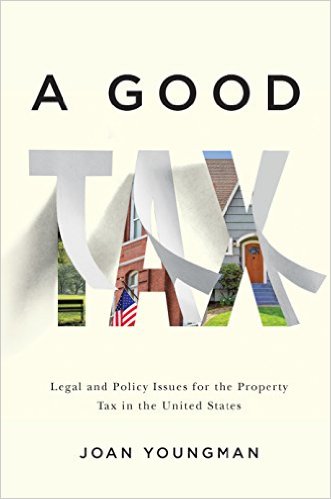Book Club Review: A Good Tax, Chapter 2

This post is a part of our Local Government book club series. Join us in reading A Good Tax: Legal and Policy Issues for the Property Tax in the United States by Joan Youngman. This week’s post focuses on the second chapter of the book.
When discussing tax policy, regressivity and progressivity are often used in conjunction with fairness, when that’s really not fair at all. Fairness denotes a value judgement of who should bear the burden of a tax whereas progressivity and regressivity are technical terms used when evaluating the ultimate incidence of a tax.
Joan Youngman defines these terms in this excerpt from Chapter 2 of The Good Tax:
“A regressive tax falls more heavily on low-income taxpayers, taking a larger percentage of their income than it takes from those with higher earnings… A progressive tax, by contrast, constitutes a higher percentage of income as income rises”.
Regressivity and progressivity are much easier to define than to determine with regards to the property tax. There are all sorts of questions to answer:
- Who is the taxpayer? It’s pretty simple to define the taxpayer in the legal sense. The property owner is liable for the property taxes. But what about renters? Some of the economic burden of the property tax may be passed on in higher rents. Or businesses? Does some of the property tax get passed on to customers in higher prices or back to employees in lower wages?
- How do we measure income? Because regressivity and progressivity are measures of the tax burden as a percentage of income, we have to define income. At first glance, this seems like another easy question, but there are many considerations. Should tax-exempt income be included? How do we deal with university towns with low average earnings? Youngman points out the property tax presents a particular issue because of the long-term nature of home purchases. Youngman states, “If housing expenditures reflect income or prospects of income over many years, comparing the property tax burden to income in any single year may yield a distorted measure.” Taxes appear more regressive if taxpayers have temporary windfalls or shortfalls in income.
- What is taxed and how is it valued? Does the burden of property tax differ for land versus improvements? Youngman has presented the property tax in Chapter 1 and now again in Chapter 2 as an amalgam of taxes on land, buildings/improvements and in Indiana personal property. Land is fixed but new buildings can be constructed and old ones demolished. A tax won’t affect the amount of land but could affect building construction. The different characteristics of these assets invoke different economic responses by owners and so the burden of taxes on these different asset types may vary. Youngman considers different tax provisions as well. Homestead exemptions and income-related circuit breakers also affect the distribution of the tax burden.
- Is the property tax a benefit tax? Property taxes pay for local government services. People can “vote with their feet,” moving to communities with better services. That added demand increases property values and so increases tax burdens. The cost of quality services is the higher tax. If property taxes are just the price we pay for local services, maybe regressivity or progressivity doesn’t matter so much.
I don’t want to give it all away! Read Chapter 2 for Youngman’s outline of three different views of the economic burden of the property tax.
One more consideration to ponder this week is how Indiana’s property tax relief tools affect the incidence of the property tax. While traditional circuit breakers are tied to the taxpayer’s income, our property tax caps are tied to gross assessed value of the property. How do the property tax caps affect how the tax burden is distributed? What about the homestead deduction and supplemental deduction?
Youngman writes in the final section of this chapter that this technical analysis of the incidence of the property tax doesn’t answer the underlying concern of fairness. Fairness by itself is an important debate for policymakers addressing social and cultural values. The measure of regressivity helps us understand the incidence of tax; it doesn’t tell us what it should be.
Tamara Ogle, Regional Community Development Educator, togle@purdue.edu



